The Tipper Cross of 1616 in 3D
Text and Models by Seán Sourke
Overview
The Tipper Cross of 1616, Naas, Co. Kildare (National Monument KD019-039004-)
In the 1897 Journal of the Co. Kildare Archaeological Society, a query sought information on the individuals commemorated on a cross located in Tipper Graveyard, Tipper townland, just outside the urban boundary of Naas. Sir Arthur Vicars, Ulster King-of-Arms, had identified the coat-of-arms on the cross as those of the Delahyde and Walsh families. Following on from this, in the same journal published in 1902, Lord Walter FitzGerald, using various 17th century sources, proposed that the initials were those of husband and wife, John Delahyde and Margary Walsh.
FitzGerald’s research revealed that a Peter Delahyde of Punchestown, who died in 1625, had as his heir a nephew named Michael, who was the son of the aforementioned John and Margary. While there is no evidence specifically for John and Margary having lived in the area, FitzGerald’s research links the wider family to this location south east of Naas. In the 17th century, a Punchestown House (since gone but its location is known) was situated only 1.7 km form Tipper graveyard. Another sources that appears to strengthen FitzGerald’s identification of John and Margary being the people commemorated on the cross is a Chancery Inquisition, which indicates that John Delahyde died in 1616 – the year carved on the cross. Although, with modern caution, we might be reticent to assert attribution from such evidence, FitzGerald’s research is, nonetheless, compelling.
Below are two models of the cross, one in monochrome and the other in full colour, the latter with annotations.
The Tipper Cross of 1616 – Monochrome
A monochrome version of the Tipper Cross model has been produced to enhance the visibility of the carved details and reveal the true topography of the surface. By removing the colour information, and other distracting non-sculptural features such as lichen, the carved details become very clear.
NOTE: This model requires good bandwidth and a reasonably powerful computer to view successfully, as the download size is 170MB.
The Tipper Cross of 1616 – Annotated
NOTE: This model requires good bandwidth and a reasonably powerful computer to view successfully, as the download size is 252MB. Alternatively, you can view images with annotations in the section below the model.
Annotations on the Model
1. Delahyde Coat-of-Arms
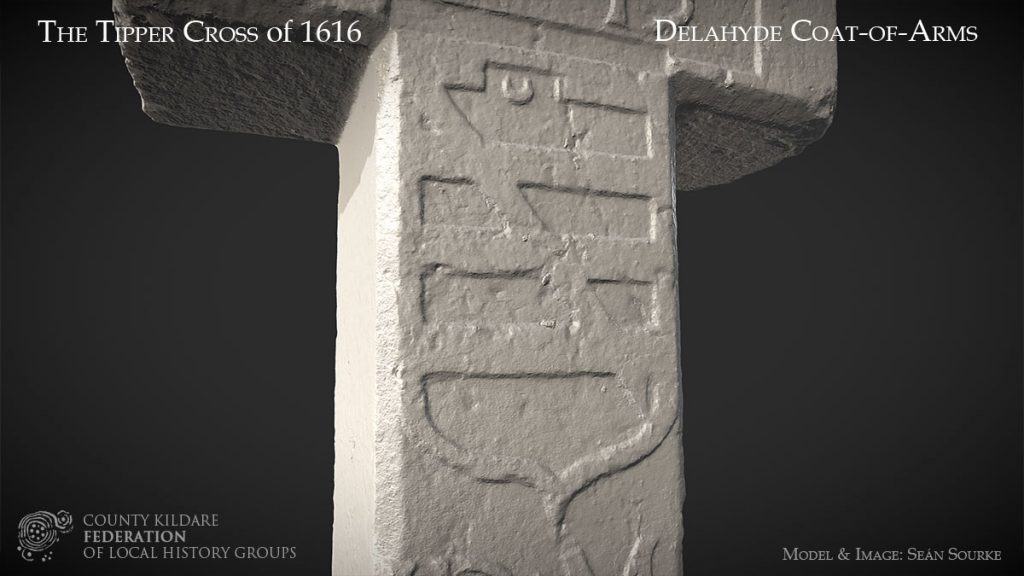
The coat-of-arms of the Delahyde family.
According to Lord Walter FitzGerald writing in 1902, this represents John Delahyde, who was originally from Ballandry, Co. Meath, but from a Loughshinny (Co. Dublin) branch of the family.
In the upper band is a crescent, which in heraldry represents a second son (FitzGerald, 1897). Despite this, records indicate that John was the first-born son of the family (FitzGerald, 1902).
2. ID – Iohannes Delahyde
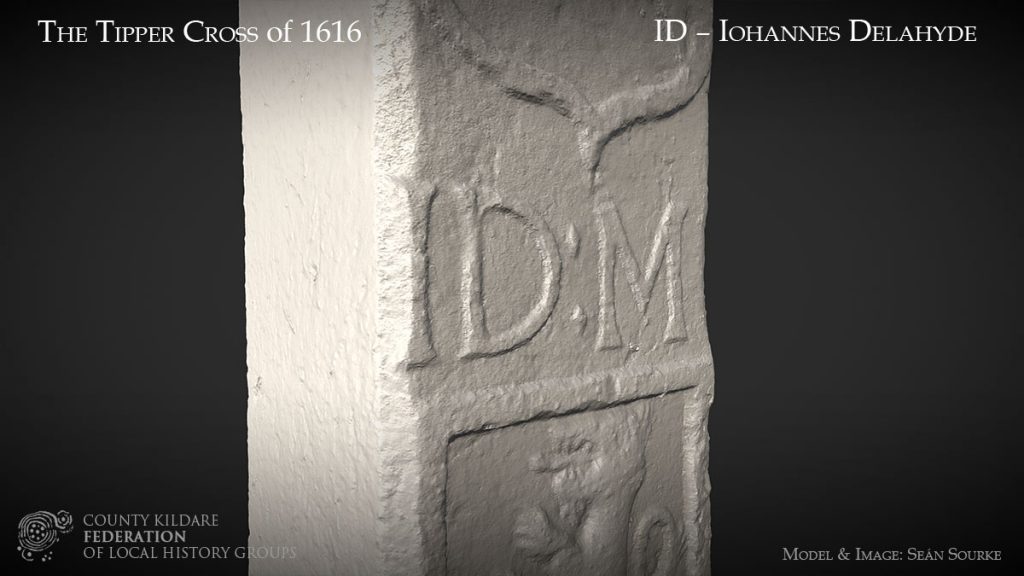
The initials ID possibly stand for a Latinised version of John – Iohannes – and the surname Delahyde.
According to FitzGerald (1902), John’s brother Peter lived at Punchestown, close to Tipper. When Peter died in 1625, his nephew, John and Margary’s son, inherited his properties. This may explain the presence of the cross at Tipper.
3. MW – Margery Walsh
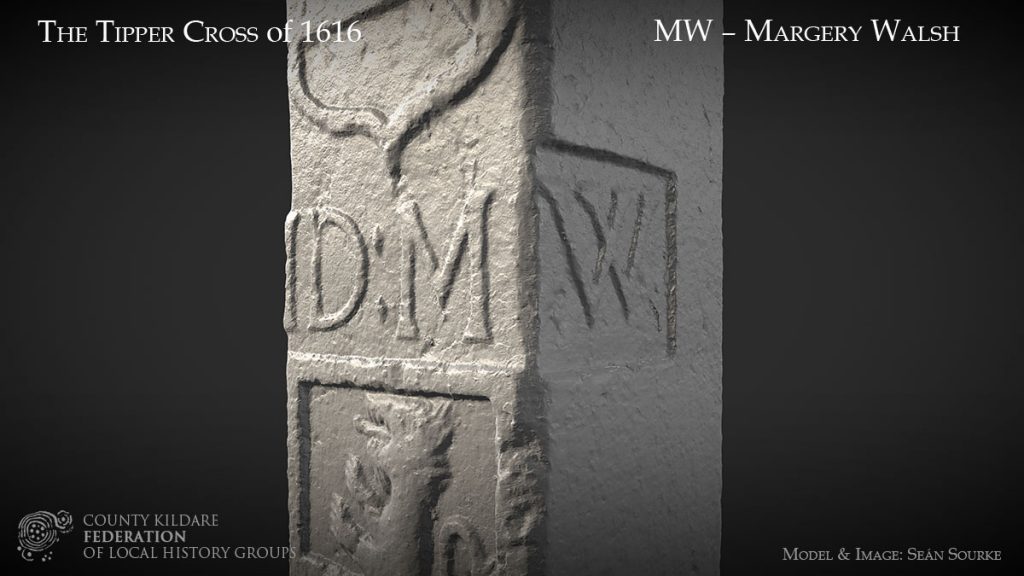
The initials MW, possibly stand for Margery Walsh, of Shanganagh, Co. Dublin, who was married to John Delahyde (FitzGerald, 1902).
4. Walsh Coat-of-Arms

The Walsh family coat-of-arms is carved lower on the cross shaft beneath the initials. It possibly represents a Margary Walsh, who was the wife of the John Delahyde identified by FitzGerald (1902). This coat-of-arms also bears a crescent.
5. IHS – West Face
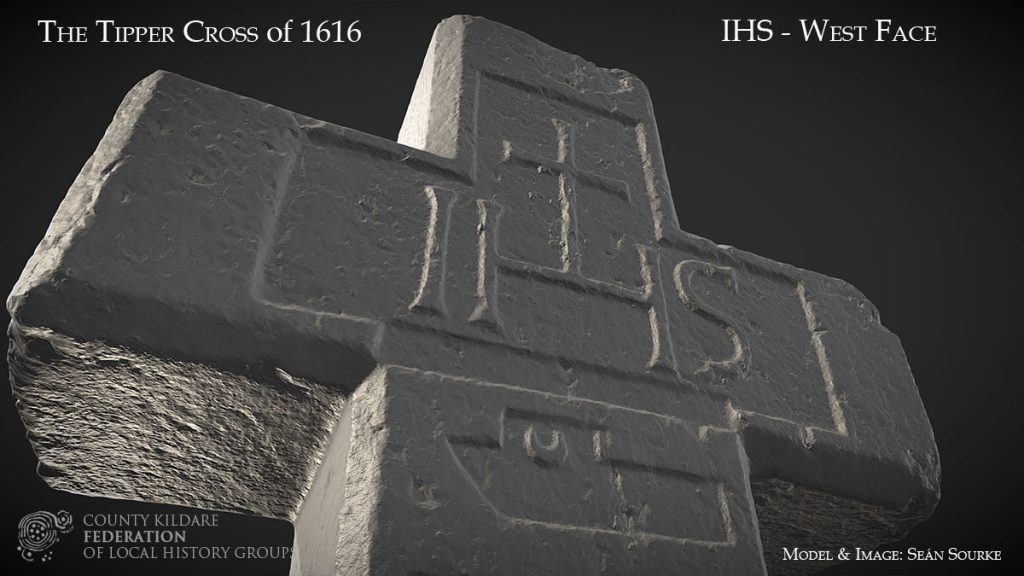
Surmounting the west face of the cross is the IHS monogram, which has a cross extending from the horizontal bar of the H. This monogram stands for Jesus Christ, derived from Greek.
6. INRI
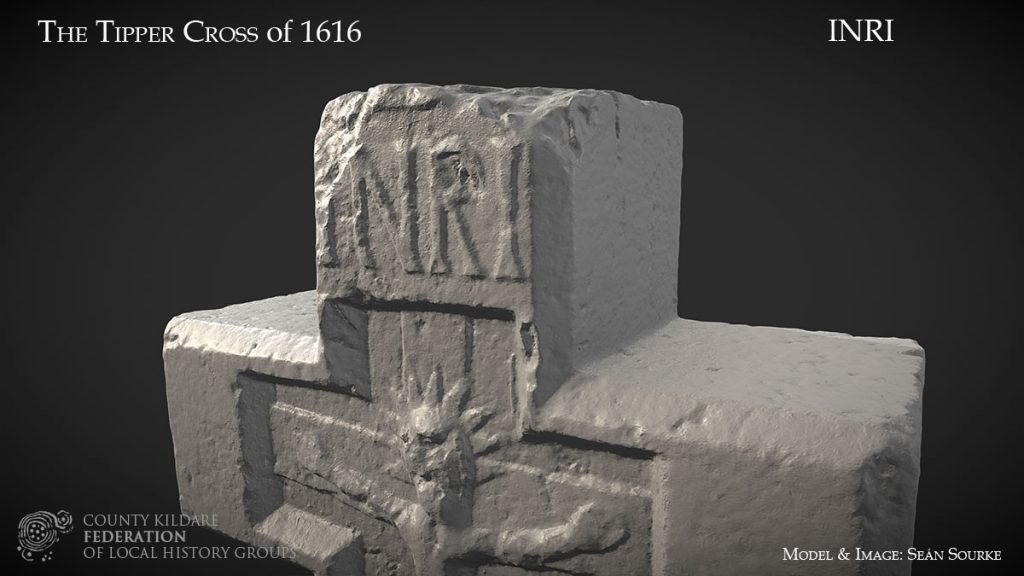
Stands for Iēsus Nazarēnus, Rēx Iūdaeōrum, which is Latin for Jesus of Nazareth, King of the Jews
7. Crucifixion Scene
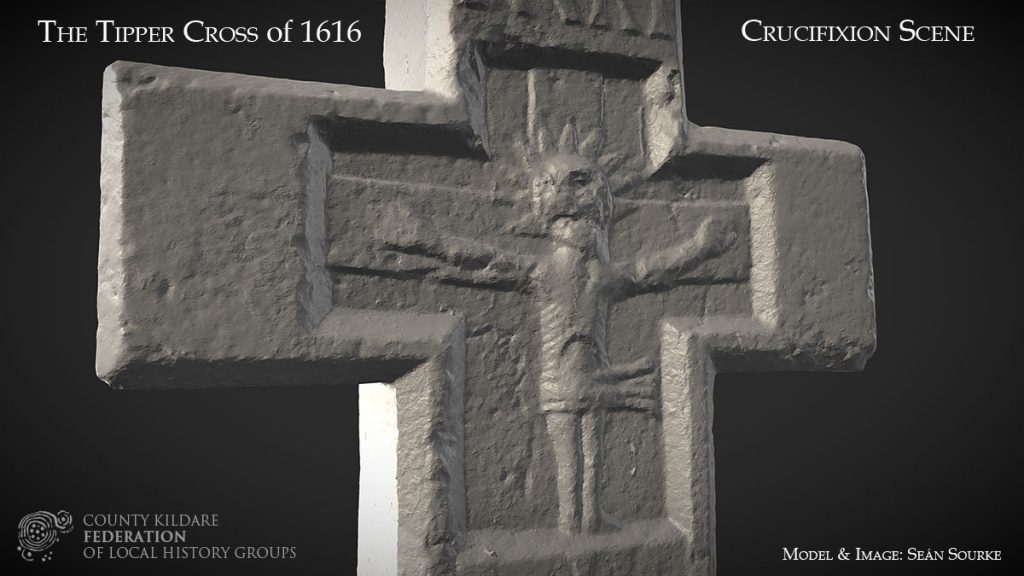
A naïve Crucifixion scene depicts Jesus with exposed ribs and wearing a loincloth that seems to blow out to the right. Above his head is a rayed crown.
The face of Jesus has been literally defaced (deliberately?) at some point in the cross’ long existence.
8. IHS – East Face
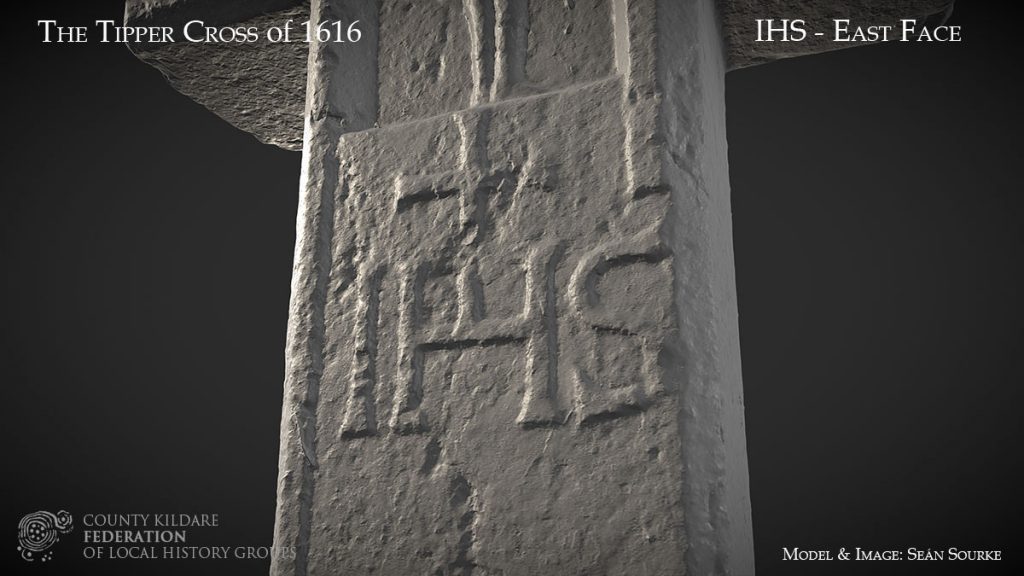
As on the west face, the IHS monogram is repeated here again. A cross extending from the H is a common feature of this monogram.
9. 1616
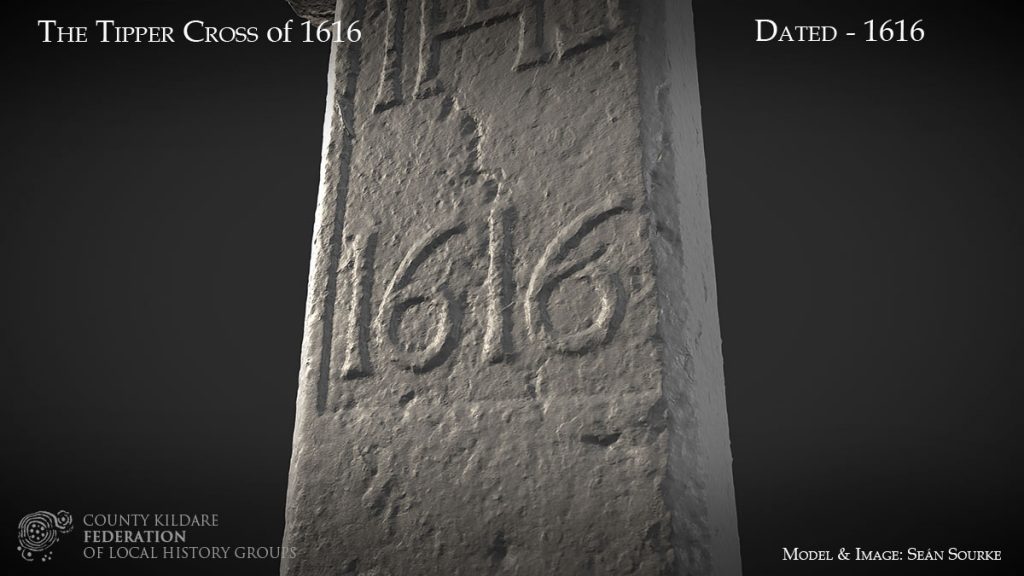
A Chancery Inquisition from Co. Dublin states that a John Delahyde died on the 13th of January 1616, which fits with the date on the cross (FitzGerald, 1902).
10. 20th Century Damage

The cross was knocked over during the felling of a tree in the graveyard in the early 1990s (Mc Cabe).
11. Restoration
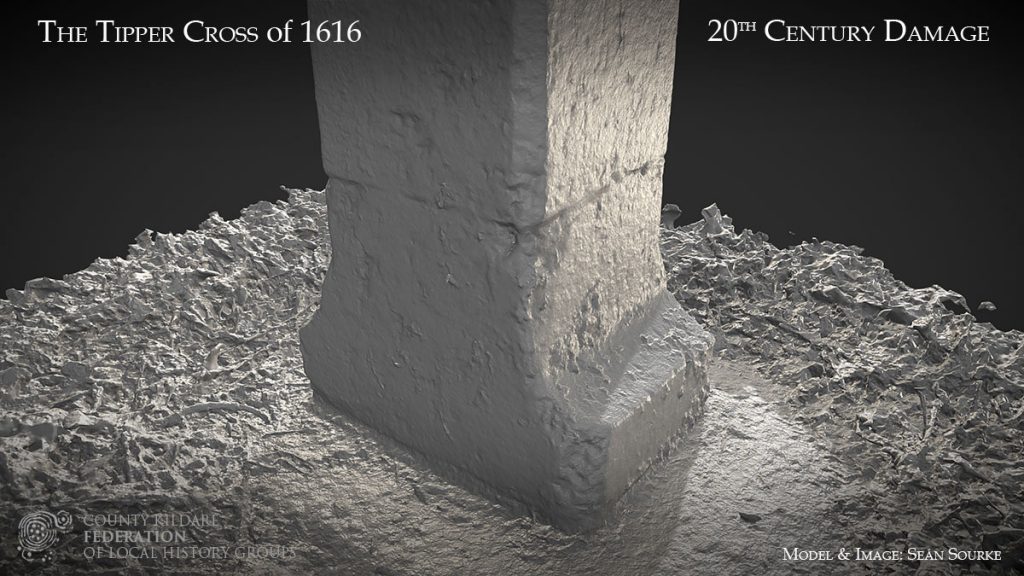
The dimensions of the cross given in 1897, when it was also described as being of one piece (FitzGerald), along with a photograph of the prostrate cross in 1992 (McCabe), indicate that it was broken in two when knocked over during a tree felling and was subsequently shortened slightly by the restoration; the scar of which is clearly visible along this irregular joint.
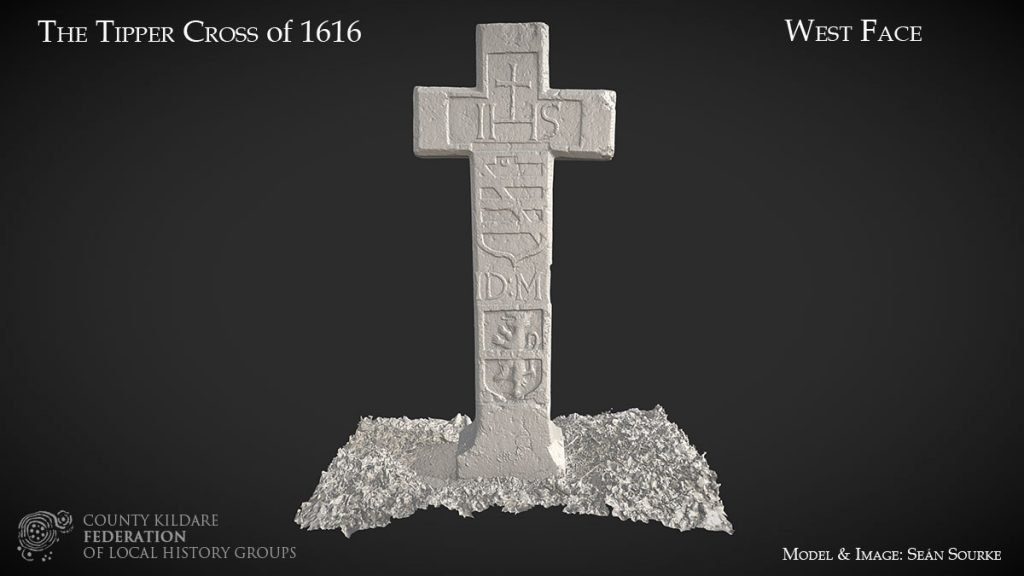
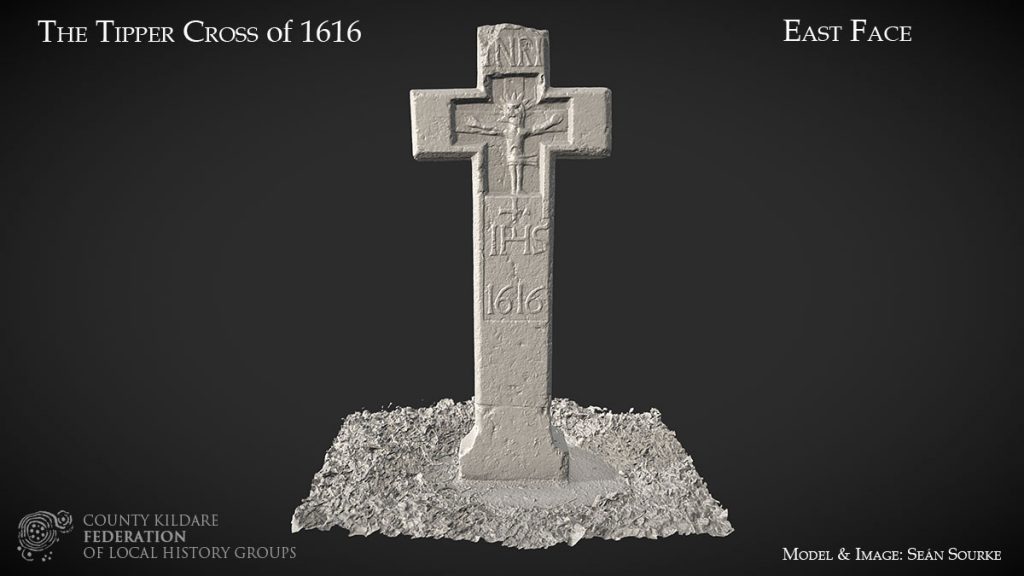
Bibliography:
FitzGerald, W. JCKAS, Vol II, No. 3, 1897, p 214-215;
FitzGerald, W. JCKAS, Vol III, No. 6, 1902, p 396;
McCabe, B. Dublin Historical Record, Vol. 49, No. 2, 1996 p 106-117.
